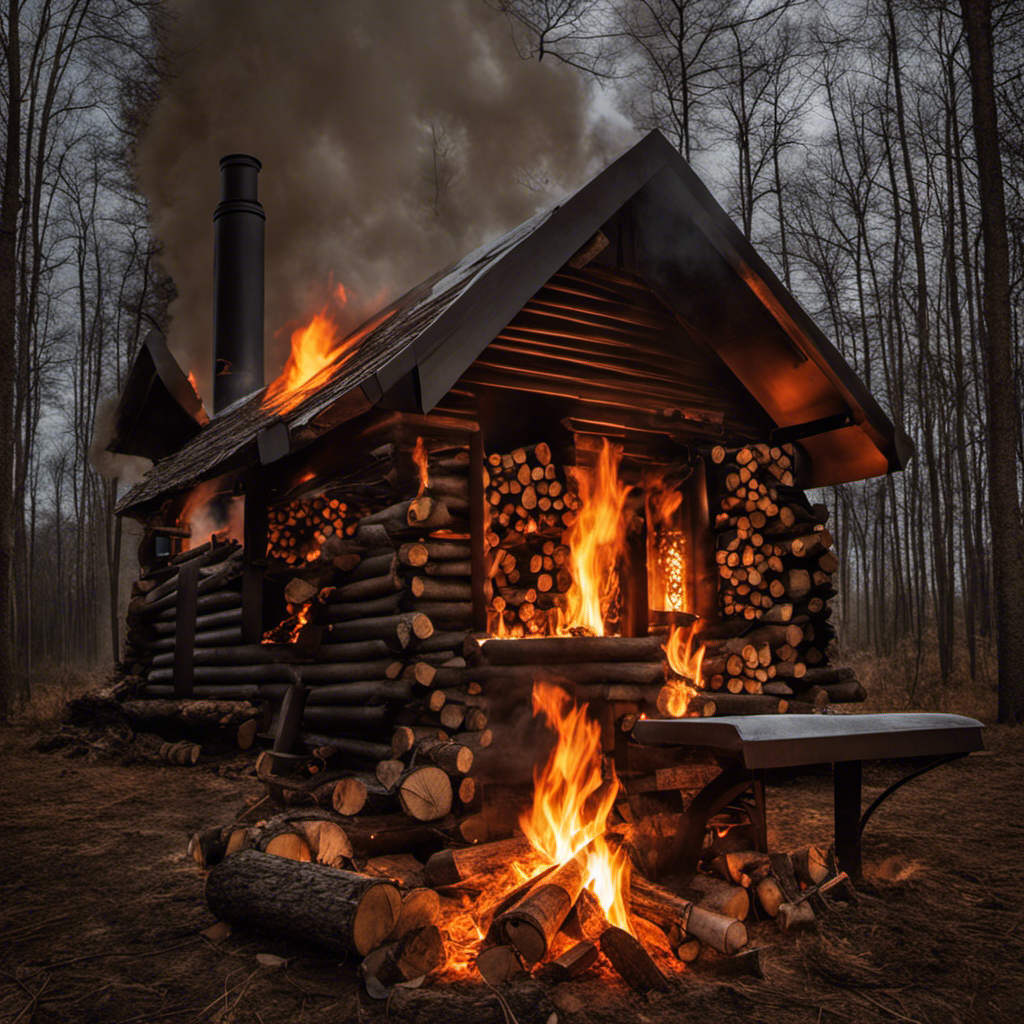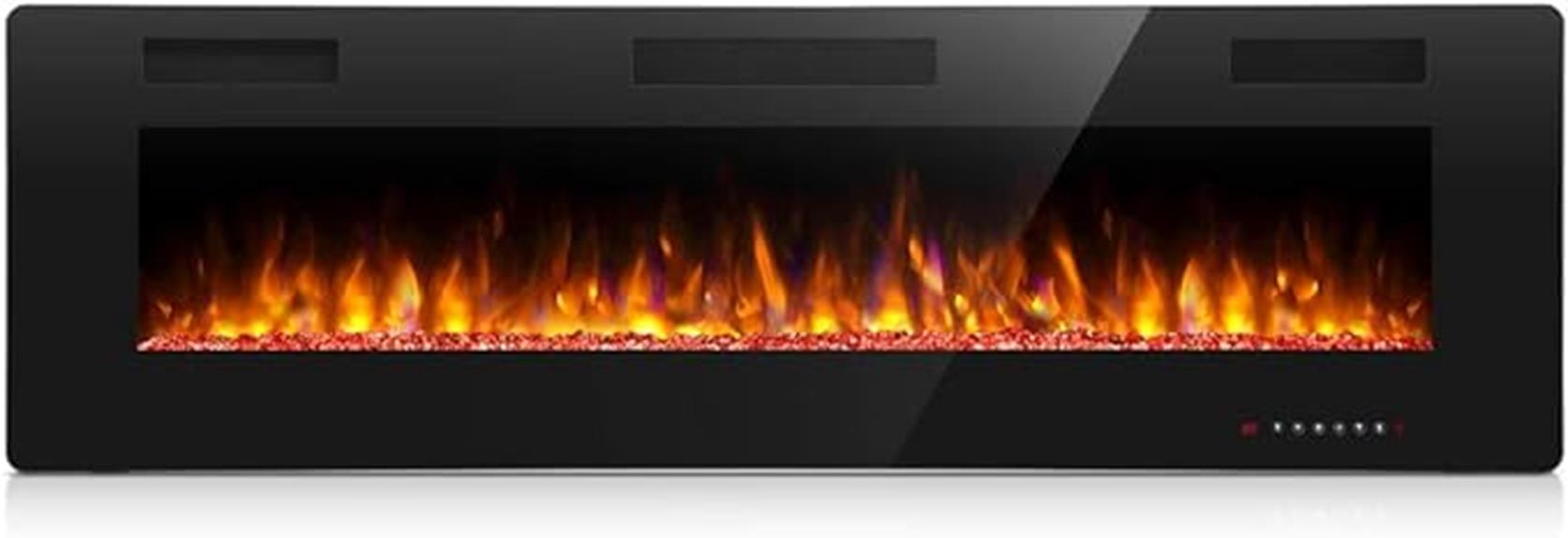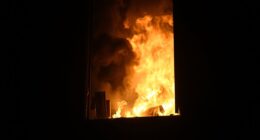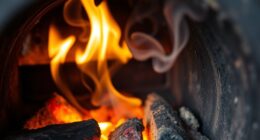As someone who is passionate about wood stoves, I have found that a frequent issue faced by 30% of wood stove users is their struggle to reach sufficiently high temperatures with their fires.
But fear not, because I’m here to shed some light on why this might be happening.
In this article, we’ll explore the potential culprits behind lackluster fires, such as insufficient airflow, improper fuel selection, damaged insulation, inadequate firebox size, and even inefficient stove design.
So grab a seat by the fire and let’s dive in!
Key Takeaways
- Ventilation issues such as chimney blockage and insufficient airflow decrease the efficiency of a wood stove.
- Improper fuel selection, such as wet or unseasoned wood, results in incomplete combustion and reduced heat output.
- Damaged or inadequate insulation allows heat to escape and fails to retain generated heat, reducing heat output and efficiency.
- An inadequate firebox size hinders heat production and can lead to incomplete combustion and chimney blockage.
Insufficient Airflow
I can’t get my fire to burn properly in the wood stove because there’s not enough airflow.
Ventilation issues can cause a decrease in the efficiency of a wood stove. When there’s insufficient airflow, the fire lacks the oxygen it needs to burn efficiently, resulting in a weak flame and lower heat output.
One common cause of ventilation issues is a chimney blockage. Over time, soot and creosote can build up inside the chimney, obstructing the flow of air. This blockage restricts the proper ventilation and prevents the fire from reaching its full potential.
To resolve this issue, it’s important to regularly clean and maintain the chimney, ensuring a clear pathway for the smoke and air to escape.
Improper Fuel Selection
Using wet or unseasoned wood as fuel in a wood stove can result in incomplete combustion and reduced heat output. This is because the moisture content in the wood prevents it from burning efficiently, leading to a smoky fire and less heat being produced. When selecting fuel for your wood stove, it’s important to consider the moisture content and fuel density.
Here are three key factors to keep in mind:
-
Moisture content: Wet wood has a higher moisture content, which inhibits the combustion process. It takes more energy to burn off the excess moisture, resulting in less heat being released into the room.
-
Fuel density: Different types of wood have varying densities. Hardwoods, such as oak or maple, have a higher density and contain more energy per unit of volume. This means they burn longer and produce more heat compared to softer woods like pine or spruce.
-
Proper seasoning: It’s crucial to properly season your firewood by allowing it to dry for at least six months. This reduces the moisture content, making the wood more suitable for burning and ensuring optimal heat output.
Damaged or Inadequate Insulation
Even with the proper fuel, the heat output of my wood stove can be affected by damaged or inadequate insulation within the stove. Insulation plays a crucial role in maintaining the desired temperature and ensuring efficient heat transfer. When insulation is damaged, it can allow heat to escape, resulting in lower heat output and decreased efficiency. Similarly, inadequate insulation can prevent the stove from reaching its full potential, as it fails to retain the generated heat. This can lead to wasted fuel and a less comfortable living space.
To maximize the performance of your wood stove, it’s essential to regularly inspect the insulation and address any damage or inadequate insulation promptly.
Now, let’s move on to the next factor that can affect the heat output of a wood stove: inadequate firebox size.
Inadequate Firebox Size
There isn’t enough wood in my firebox, so I’ll need to add more if I want to increase the heat output. The size of the firebox plays a crucial role in how efficiently your wood stove operates.
Here are three reasons why an inadequate firebox size can hinder the heat production:
-
Firewood moisture content: Wet or unseasoned firewood contains a high moisture content, which requires more space to burn properly. If your firebox is too small, it may struggle to accommodate the larger pieces of wood needed to generate sufficient heat.
-
Chimney blockage: A small firebox can lead to incomplete combustion, resulting in the production of more smoke and creosote buildup. This buildup can clog your chimney, reducing airflow and preventing proper ventilation, ultimately affecting the heat output.
-
Limited air circulation: An undersized firebox restricts the airflow around the wood, impeding the combustion process. This lack of oxygen can result in a weaker fire and lower heat production.
To maximize the heat output of your wood stove, ensure that your firebox is appropriately sized to accommodate the amount of firewood you need.
Inefficient Stove Design
I’ve noticed that my wood stove doesn’t heat up efficiently, but I think it’s because of the stove’s design. When it comes to heating with wood, combustion efficiency is crucial. If the stove isn’t designed properly, it can lead to inefficient combustion and a poor draft. These issues can significantly impact the stove’s ability to generate and distribute heat effectively.
One common design flaw is the lack of air circulation, which can restrict oxygen supply and hinder the combustion process. Additionally, if the stove doesn’t have a well-designed chimney or exhaust system, it can result in a poor draft, preventing the smoke and gases from being expelled properly.
To maximize the heat output of your wood stove, it’s essential to invest in a well-designed model that prioritizes efficient combustion and proper draft.
Conclusion
Well, my friend, it seems like your wood stove is just not cutting it when it comes to heating things up.
Perhaps it’s time to take a closer look at the airflow, fuel selection, insulation, firebox size, and stove design. These factors can all play a role in the lack of heat production.
So, roll up your sleeves, get your fire-building skills ready, and let’s give that wood stove the makeover it deserves.
Trust me, you’ll be feeling the heat in no time.











